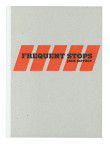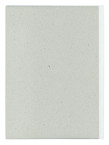Artspeak
Jeremy Todd
Jeremy Todd is an interdisciplinary artist living in Vancouver who curates, teaches and writes on a regular basis. His work often considers the formation of cultural memory and its socio-political effects. He was the Director/Curator of the Helen Pitt Gallery ARC (2003-05) and acted as the interim Director/Curator of the Richmond Art Gallery in 2007. He is currently working on a second feature- length, experimental digital film (featuring performances by Margaret Dragu, Natasha McHardy, Eric Metcalfe and Arthur Tashian) and maintains an ongoing image/text project at www.notsentletters.blogspot.com.
Exhibitions
-
MICHAEL DREBERT
March 7–March 14, 2008Michael Drebert’s practice investigates quotidian actions and objects through subtle gestures of hope and sabotage. Potentiality figures strongly in his work: “An answer is not found before something is made. It isn’t even found once something is supposedly finished. The answer to a situation is to begin. I am interested… in the radical potential of performative gestures as an agent for cultural investigation and positive change… identifying unorthodox solutions to seemingly unsolvable issues, such as injustice, hopelessness and dismal democratic standards.”
Through Drebert’s process, an identification of his subject often points to a consideration of phenomenological existence. This occurs in both his undertakings with objects as well as his so-called actions. For example, in Candle a manufactured candle is melted down, the wick frayed, and then both components recast in a mold of its original form. The wick is embedded in the body and can no longer be lit: the object becomes something new through the process of its own making.
In early March, Artspeak will publicly disseminate a poster for Drebert’s new work Available Light. The poster states that between the dates of March 7 and March 14, the artist will use the available light in Vancouver to try to start a fire. Following an earlier project in which Drebert offered to “take you to Hope and back,” Available Light functions as a catalyst, one that has positive as well as potentially dangerous aspects. As the exact location, time and scope of the fire the artist will attempt to produce will be unknown, the gesture takes on both a romantic and saboteur-like feel, rife with associations. The potential destruction in Drebert’s gesture is as strong as the potential of hope.
This performative poster project will take place between March 7–March 14, 2008 in various locations around Vancouver.
-
JACK JEFFREY
February 1–March 8, 2003The demarcation of boundaries and the occupation of space has figured strongly in Jack Jeffrey’s long-standing practice. Portable structures that carry the authoritative presence of agencies and bureaus that regulate our public environment traffic cones, hazard symbols, bollards and stantions are considered for their formal qualities and materials and reread as the result of aesthetic choice, as authored. Jeffrey alters these forms, hybridizing and testing their ability to garner attention, hold space and re-route spectatorship.
This exhibition primarily focuses on ‘chocks’, the blocks used to ensure that trucks and other heavy vehicles remain stopped. These are objects that arrest movement, that wedge great volume and weight into a stationary position. They have been produced in materials such as plaster, rubber and wood; their scale has been altered and the relationship between the chock and its handle, the promise of portability has been pushed. In Untitled (Chock #3), a pair of pink wedges dangle from the wall on silky rope like the ballet slippers of lost girlhood while another chock creeps up in scale to become a miniature concrete staircase.
In a counterpoint to the series of ‘full stops’ a new video work, Boundary Road, records the dividing line between the city of Vancouver and the city of Burnaby. From a moving vehicle, the camera records each side of Boundary Road in a north-south, then a south-north direction. Presented on two monitors, this work indicates the arbitrary nature of borderlines as it visually traces similar excursions through residential, commercial, industrial and recreational property. The twenty-minute trips point to the vacant signification of the street name and the eroding function of municipal divisions in the context of amalgamation.
anarchive 21
anarchive presents a selection of intriguing objects, catalogues, publications and artists’ books from our archive collection, investigating the relationship between visual art and writing
Bibliography
Alpers, Svetlana (1984) The Art of Describing, University of Chicago Press
Ange, M (1995) Non-Spaces, Verso Bahba, H (1994) The Location of Culture, Routledge
Batchelor, D. (2000) Chromophobia, Reaktion Books
Burgin, V. (1997) In/Different Spaces, Univ. of California Press
Burgin, V. (1996) Some Cities, Reaktion Books Causey, Andrew (1998) Sculpture Since 1945, Univ. of Oxford Press
Foster, H. (1996) The Return of the Real, M.I.T. Press Fyfe, N.(editor) (1998) Images of the Street, Routledge
Goodman, Nelson (1978) Ways of Worldmaking, Hackett Publishing Godfrey, Tony (1998) Conceptual Art, Phaidon Press
Gregory, Derek (1996) Geographical Imaginations, Blackwell Lefebvre, Henri (1996) Writings on Cities, Blackwell
Lefebvre, Henri (1991) The Production of Space, Blackwell McEvilley, Thomas (1999) Sculpture in the Age of Doubt, Allworth Press
Miles, M. (1997) Art, Space and the City, Routledge
Sorkin, Michael(editor) (1992) Variations on a Theme Park, Noonday Press
Tucker, William (1974) The Language of Sculpture, Thames and Hudson
Talks & Events
-
PATRIK ANDERSSON, JACK JEFFREY
March 28, 2003Artspeak is pleased to host the book launch of Frequent Stops, a publication produced in conjunction with Jack Jeffrey’s exhibition Recent Work which ran at Artspeak from February 1st to March 8th, 2003. In celebration of the publication launch, Patrik Andersson is giving a talk regarding Jeffrey’s work and book.
Publications
-
Title: Frequent Stops
Category: Exhibition Catalogue
Artist: Jack Jeffrey
Writers: Patrik Andersson
Design: Judith Steedman
Publisher: Artspeak
Year published: 2003
Pages: 32pp
Cover: Hardcover, card
Binding: Perfect Bound
Process: Offset
Features: 10 b&w images, 9 colour images
Dimensions: 17.5 x 13 x 0.5 cm
Weight: 112 g
ISBN: 0-921394-43-8
Price: $5 CDNFrequent Stops is published on the occasion of an exhibition of new work by Jack Jeffrey, which took place at Artspeak between February 1 and March 8, 2003. The demarcation of boundaries and the occupation of space have figured strongly in Jack Jeffrey’s long-standing practice. Portable structures that carry the authoritative presence of agencies and bureaus that regulate our public environment — traffic cones, hazard symbols, bollards and stantions — are considered for their formal qualities and materials and reread as the result of aesthetic choice, as authored. Jeffrey alters these forms, hybridizing and testing their ability to garner attention, hold space and re-route spectatorship.
In Frequent Stops, Patrik Andersson considers the hovering and contingent meaning of the objects offered in the exhibition in relation to modernism and to modernization. Employing a re-reading strategy that parallels Jeffrey’s, his investigation of the sign systems of industry and art (and their respective authoritative claims), beats a path between motion and stasis upon which notions of progress, either aesthetic or economic, depend.






